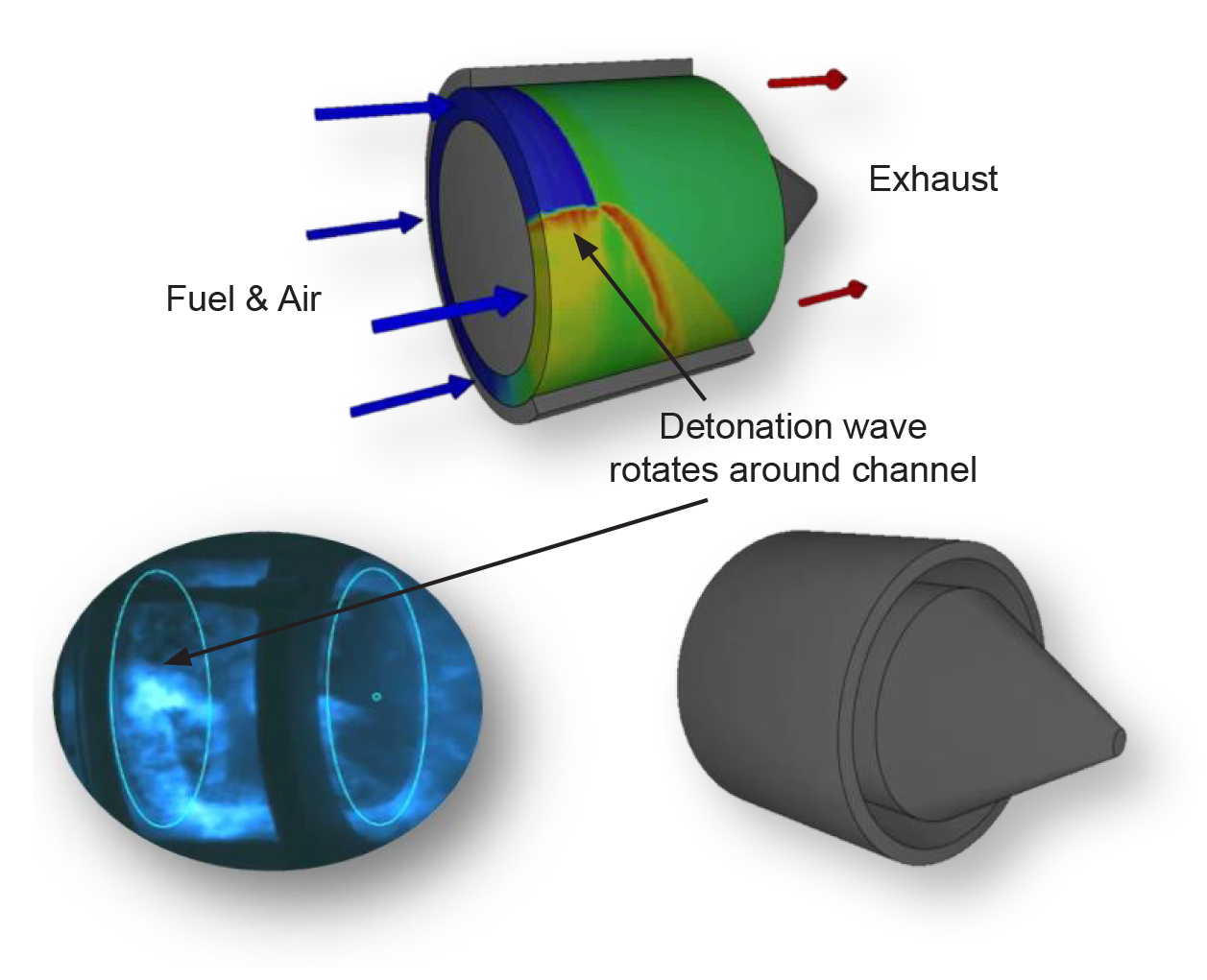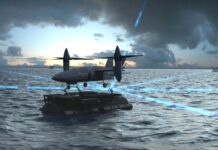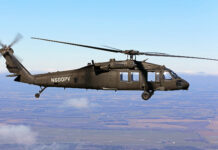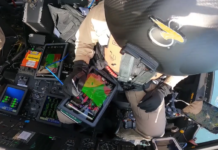International competition for hypersonic weaponry is growing more intense every day, and the US and its allies have a bit of catching up to do with the Russians and Chinese.
An article recently published in the Wall Street Journal on 16 September by Sharon Weinberger clearly stated the situation: “Hypersonic Missiles Are Game-Changers, and the US Doesn’t Have Them.” As far back as 1 March 2018, during his presidential address to the Russian Federal Assembly, President Vladimir Putin announced the deployment and serial production of a new hypersonic missile. He claimed that Russia’s hypersonic missiles were the best in the world. Russia has been actively working on and testing different hypersonic missile systems since 2015.
The Avangard hypersonic glide vehicle (HGV) is a widely recognised example as it was reported to have a maximum speed in the region of Mach 20 to 27. The Russian military formed its first missile regiment equipped with Avangard HGVs in December 2019. Another Russian hypersonic weapon development is the scramjet-propelled Zircon hypersonic cruise missile, which can be launched from ships or submarines and is estimated to reach speeds of around Mach 9. It is understood to use a solid rocket booster to propel itself to the required speed for scramjet functionality. Zircon was understood to have entered operational duty with Russia in January 2023, loaded onto the frigate Admiral Gorshkov, for its voyage across the Atlantic and Indian Oceans, as well as the Mediterranean Sea. Both Avangard and Zircon are assessed as being capable of carrying nuclear warheads.
Elsewhere, China has been working on fielding hypersonic missiles for many years, and deployed a new hypersonic missile, the DF-17, in 2020. The DF-17 is a medium-range hypersonic missile which mounts the DF-ZF HGV, and is also assessed to be capable of carrying a nuclear warhead. In 2021, the Chinese Rocket Forces also surprised observers when they conducted a test of an HGV-equipped missile, which reportedly flew around the world in 2021, but “missed its target by about two-dozen miles [38.6 km]” according to a report by the Financial Times. US intelligence agencies are rushing to find out how much further Russia and China are in their hypersonic missile programmes.

Credit: PLA
Hypersonic speeds are defined as in excess of Mach 5 (about 6,174 km/h or 3,836 mph). However, there are large number of weapons which fit into this category, even the German WWII-era V-2 rocket came close to hypersonic, reaching a top speed of around Mach 4.3, and the subsequent US-made test missile based on the V-2, known as V-2/WAC Corporal, reached a top speed of Mach 6.7 in 1949. As such, the ‘hypersonic weapon’ label is typically applied to endo-atmospheric weapons which are capable of manoeuvring at hypersonic speeds. This ability to manoeuvre makes hypersonic weapons more difficult to intercept by most currently deployed anti-ballistic missile systems, since they can change course to avoid interception or known defended areas. These qualities of high-speed and manoeuvrability also make hypersonic missiles a good first-strike weapon.
Design Challenges
Building new propulsion technologies can be a dangerous process. Conventional rockets require large quantities of highly explosive fuel to operate in the Earth’s atmosphere or launch payloads into space. The Saturn V rocket, used to launch the Apollo moon missions, exemplifies this. It was a super-heavy lifter that consumed approximately 20 tonnes of volatile fuel each second of burn. The first stage fuel tanks held 768,438 litres of highly-refined kerosene (RP-1), along with 1,252,971 litres of liquid oxygen as the oxidiser. The second and third stages used liquid hydrogen and LOX. The Saturn V weighed an astonishing 2,800 tonnes when fully fuelled. While the first Saturn V was launched 56 years ago, the rocket is still a marvel of engineering. During the development process, rocket engineers experienced significant problems with the Saturn V’s rocket engines caused by combustion instability – in which rapid pressure changes in the burning propellants created hot spots and vibrations strong enough to damage or destroy the engine.
Due to the high volatility and difficulty storing liquid rocket propellants, most military rockets and missiles use solid fuel. Rockets rely on deflagrative combustion for propulsion. A deflagrative combustion rocket engine produces thrust when the fuel and oxidiser mixture burns, releasing energy relatively slowly over a longer period. Heated gases are directed through a nozzle at high speeds to produce thrust in the combustion process. An opposing force is created as a result, propelling the rocket forward. Rockets are an effective solution for reaching space, but they burn through propellant very quickly, making them somewhat impractical to use for sustained hypersonic speed and manoeuvre inside the Earth’s atmosphere. As such, air-breathing engines are preferable. The main type of air-breathing engine used in hypersonic flight is the scramjet.

Credit: USAF/Joshua Armstrong
The term ‘scramjet’ stands for ‘supersonic combustion ramjet’. Scramjets are more complex than ramjets but can achieve higher speeds because of their efficient combustion process. Using supersonic combustion, a scramjet allows for sustained flight at hypersonic speeds and is a type of air-breathing jet engine. Scramjets work by using the forward speed of their host platform to compress incoming air to supersonic speeds, following which fuel is mixed with compressed air, which is then ignited to produce thrust. This reliance on using the platform’s speed to compress air to supersonic speeds means that scramjets are only usable once the platform has already reached high supersonic speeds. For this reason, platforms using scramjets have often been paired with rocket boosters to get the platform up to the required speeds for the scramjet to work. One proposed solution to this problem is the dual-mode ramjet (DMR), which functions as a ramjet up to supersonic speeds, and then once the requisite Mach number is reached, begins to operate as a scramjet, to reach hypersonic speeds.
An alternative proposal to the scramjet design is the Rotating Detonation Engine (RDE). This type of engine promises to develop more power while using less fuel than traditional engine designs and could be usable at a wider range of speeds than Scramjets. There are two primary types of RDE – the air-breathing variant, commonly referred to as an RDE, and the rocket engine variant, which uses liquid oxygen as the oxidiser, commonly referred to as a Rotating Detonation Rocket Engine (RDRE). The RDE operates by using detonative combustion (as opposed to deflagration, as with traditional jet and rocket engines) to produce a continuous pressure wave that rotates around an annular combustion chamber before being expelled as hot gas. The supersonic waves produced by fast explosions in detonative combustion has been reported to potentially be as much as 25% more efficient than traditional deflagrative combustion. On the whole, RDEs could be smaller, more efficient, and cheaper to run, than traditional gas turbine (jet) engines. On the other hand, they create more noise, and maintaining a stable detonation wave poses a serious engineering challenge. From the US military’s point of view, the perfection of an RDE could lead to a step change in in rocket, tactical missile, aircraft, and even marine vessel propulsion design.

Credit: US Air Force Research Laboratory
The RDE is not in of itself a new idea, it was first proposed by Soviet Physicist Bogdan Vyacheslavovich Voitsekhovskii in a 1960 paper published in the Soviet Journal of Applied Mechanics and Technical Physics. However, as with many designs conceived during the Cold War, there were barriers to its successful implementation. Now, with the benefit of modern technologies and materials science as well as clear use cases, the idea is once again receiving serious attention.
RDE Working Principles
While the specifics of how DARPA’s RDE will work are classified, RDE engines generally use these steps to create hypersonic flight: The first step involves providing the required propellant to the RDE. It usually involves a fuel and an oxydiser – these would typically be a hydrocarbon-based fuel and atmospheric oxygen respectively for RDEs, or in the case of RDREs, liquid hydrogen and liquid oxygen. After the propellants are supplied, an initial ignition source is necessary to start the detonation process. A spark or another ignition mechanism can achieve this. After the initial ignition, the detonation wave spreads through the combustion chamber. To maintain steady engine performance, it is crucial to maintain a stable and continuous detonation wave – something that is very difficult to do. Shock waves from the detonation wave compress and mix the fuel and oxidiser. The mixture’s temperature and pressure rise quickly due to this compression, resulting in rapid combustion. As such, the engine must be engineered to withstand the stress of detonations, heat and pressure. When the combustion products expand and are expelled through a nozzle, thrust is generated. The nozzle is shaped to efficiently convert high-pressure, high-temperature gases into directed thrust.
For the entire flight duration, the detonation process must continue. Regulating the flow rates of fuel and oxidiser, as well as the temperature and pressure, allows for a sustainable stable detonation within the RDE. Various sensors, monitoring systems, and control mechanisms are employed to ensure the RDE operates within safe and optimal performance parameters. By continuously monitoring factors such as temperature, pressure, fuel flow rate, and thrust, these systems are capable of making any necessary adjustments.

Credit: US Air Force Research Laboratory
Recent RDE Advances
In 2020, a team from the University of Central Florida (UCF), working with the US Air Force Research Laboratory, tested the world’s first working RDE. In a New Atlas article published on 4 May 2020, Loz Blain quoted Kareem Ahmed, an assistant professor in UCF’s Department of Mechanical and Aerospace Engineering and the leader of the research, who said: “The study presents, for the first time, experimental evidence of a safe and functioning hydrogen and oxygen propellant detonation in a rotating detonation rocket engine” adding, “Just a few months prior, a number of US rocket engine experts had publicly declared that hydrogen-oxygen detonation engines were not possible” before stating, “The US Air Force is targeting a rocket launch flight test by 2025, and we are contributing to achieving that goal.”
In March 2022, Pratt & Whitney, a subsidiary of RTX (formerly Raytheon Technologies Corporation), received a contract from the Air Force Research Laboratory (AFRL) for an RDE ground test demonstration programme. The programme will feature the novel RDE architecture. Pratt & Whitney, Raytheon Missiles & Defense, and Raytheon Technologies Research Center will jointly execute the programme. RDEs are also of interest to the US Navy. Gas-turbine engines are used for propulsion aboard the majority of the Navy’s warships. When RDEs are created for ships, according to the US Naval Research Laboratory (NRL), they will produce 10% more power and be 25% more fuel efficient than traditional engines. On both an operational and strategic level, RDE fuel efficiency could benefit US naval operations in the Pacific.
Gambit’s Design Phases
In the US, the development of a ground-launched, intermediate-range missile using RDE propulsion is being spearheaded by the Defense Advanced Research Projects Agency (DARPA), under the Gambit programme, which “develop and demonstrate a novel Rotating Detonation Engine propulsion system that enables a mass-producible, low-cost, high-supersonic, long-range weapon for air-to-ground strike in an anti-access/area denial (A2AD) environment.” Overall, the programme is split into two phases.
Phase 1 of the programme is expected to span 18 months, and is focused on the preliminary design of the RDE propulsion system and execution of direct connect combustor testing as well as free jet inlet testing. Direct connect combustor testing demonstrates the ability of the RDE to achieve sustained detonation combustion. The free jet inlet testing demonstrates the ability of the RDE to ingest and accelerate air. DARPA developed a preliminary design for the full-scale RDE test article and initiated fabrication of key components for the full-scale RDE test article. In August 2022, DARPA held a proposers day to provide information for potential proposers to develop an RDE. Following this, a development contract for the Gambit programme RDE was awarded to RTX on 4 October 2023. This award was understood to be concerned primarily with the first phase of the programme, with RTX stating: “Under the contract, RTX will rely heavily on iterative development of performance models which will be anchored by real-world data from incremental system tests…Future optional phases of the Gambit program will shift to building hardware to conduct a flight weight free-jet test.”

Credit: US Air Force Research Laboratory
Phase 2 of the Gambit programme will focus on detailed design, fabrication, and testing of the full-scale RDE. This test engine will be designed to demonstrate the performance of the RDE in a simulated air-to-ground strike environment. Phase 2 is also anticipated to last 18 months and involves full-scale testing of an RDE in a free jet test facility under flight conditions, as well as comprehensive design of the propulsion system. The results of the Phase 2 free jet testing will serve as the basis for a later programme to test a weapon prototype in flight using the RDE. The programme is also planning to begin fabrication of a full-scale RDE in preparation for Phase 2 testing. If successful, Phase 2 will lead to the development of a new class of propulsion systems that enables mass-production of low-cost, high-supersonic, long-range weapons for air-to-ground strike.
Rushing Forward
Using detonation rather than deflagration to power an engine promises to be a serious leap forward. The RDE has a straightforward mechanical design but is dynamically quite complex and demands exact timing and fuel delivery rates. The development and potential applications of RDE by DARPA represent a paradigm shift in propulsion technologies. From enhanced fuel efficiency, increased power-to-weight ratios, to adaptability and scalability, RDE engines have the potential to revolutionise aviation and even space exploration – albeit in the latter case using a liquid oxygen fed variant rather than air-breathing design.
Despite the challenges faced in ensuring combustion stability, optimising engine controls, and addressing material constraints, ongoing research and development projects promise a bright future for RDEs. As technology advances and research progresses, RDEs have the potential to transform our understanding of propulsion systems and open new frontiers in aerospace capabilities. The Gambit programme is a critical step towards developing a new generation of high-speed weapons that are more affordable, reliable, and capable than current systems. Until recently, RDEs have been theoretical. DARPA’s Gambit programme hopes to turn the theoretical into the practical.
John Antal and Mark Cazalet











